The leader of our 2023 Svalbard beach cleanup
Eelco Leemans has been traveling to the Arctic since the early 1990s, roughly as long as Oceanwide Expeditions has existed. So it’s no surprise that his longstanding relationship with the far north has made him a dedicated advocate for its preservation.
The leader of a waste collecting team on the 2022 SEES expedition for the Dutch University of Groningen, Leemans was one of roughly 100 people – half scientists, half tourists – who sailed on our Ortelius to the east Svalbard island of Edgeøya to study the effects of climate change.
Years before that, he was a sailor by trade and in fact made his first trip to the Arctic in 1993 as chief officer on Rembrandt van Rijn. He spent that summer in Svalbard, and though he was not professionally involved in waste removal at that time, the problem of Arctic plastic pollution was already becoming apparent to him.
Next summer Leemans will board Hondius to lead our guides and guests in our part of the Clean Up Svalbard waste removal program, a joint effort of the governor of Svalbard, the Association of Arctic Expedition Cruise Operators (AECO), and other polar cruise operators.
We spent some time talking to Leemans about what got him started in the project of waste removal and analysis on Svalbard, where the state of Arctic plastic pollution is today, and his thoughts on the future health of the northern polar regions.
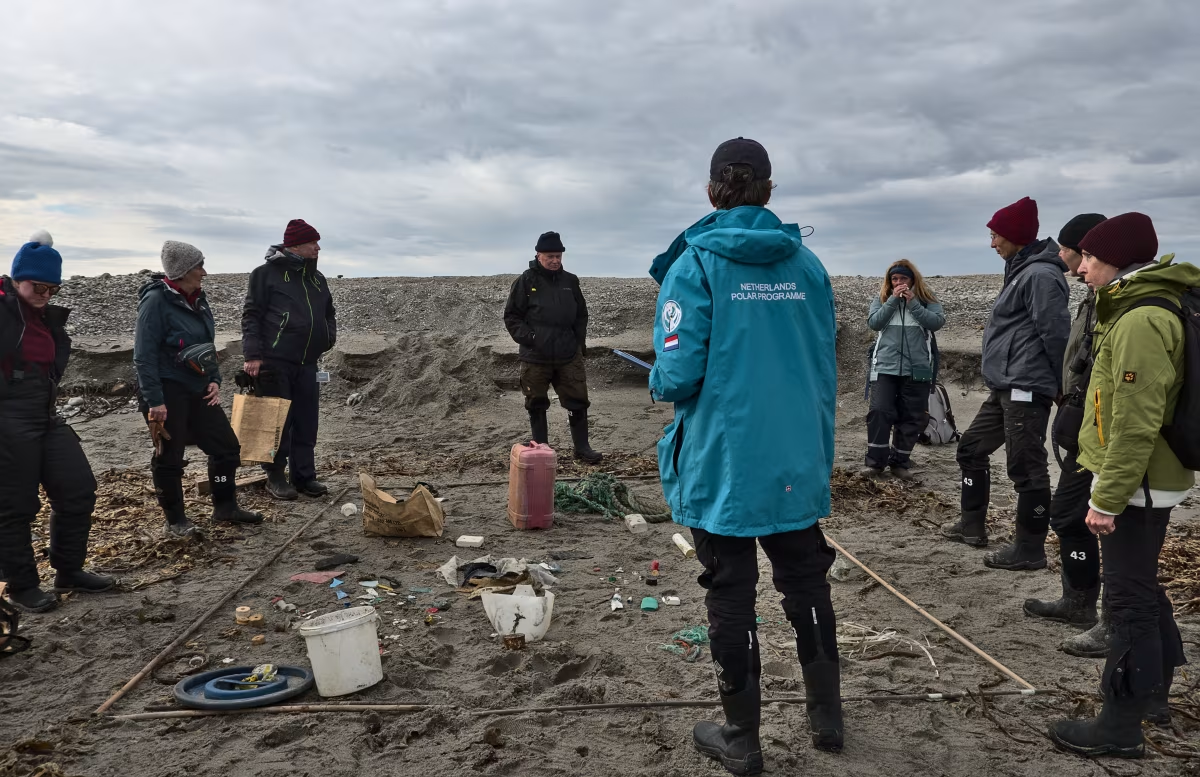
You mentioned your first encounter with Arctic waste was on your first Arctic trip. What are details of that, and how did it inspire your current projects?
During my first trip in 1993, I noticed the waste collection on board wasn’t very sophisticated. Everything was just thrown together. So I divided everything by plastic, metal, paper, et cetera. But when we came into Longyearbyen, the harbormaster said they did not segregate trash there. Of course, that was almost thirty years ago. Things are done much differently now.
After that I decided to change my career, so I did a second study. My first study was maritime school, the second was environmental science. I’ve been working for various environmental organizations since then.
In late 2016, I was at the Ministry of Foreign Affairs in the Netherlands and met Oceanwide’s consultant, Ko de Korte. I also ran into an ex-colleague of mine there who was doing research into plastic waste on beaches, and Ko told us how much plastic waste is on the beaches of Svalbard. He invited me for one of your Svalbard beach cleanup trips. I wanted to help with that, but what I thought was more important was researching what the waste is and where it’s coming from.
That was the start of what we’ve been doing the past five years. I’ve traveled many more times to other places in the Arctic, but the point is always the same: collect as much waste as possible, find out its types and sources, then get the information to governments and regulatory entities like the International Maritime Organization (IMO).

It sounds like going into environmental work was something that more or less developed by chance during your sailing career, which was your first passion.
Yes, I was into sailing from a very early age. When it became my career, I sailed on a variety of ships and in a variety of regions. I worked on a school ship crossing the Atlantic and with Greenpeace for a bit, but my focus began to change based on the experiences I was having at sea.
How do you conduct these waste projects, and what have you learned?
There are many important parts to the work. The first is simply to remove the waste to keep plastic from building up and putting more microplastics into the environment. Another important step is to separate the waste we gather into types so that we can analyze what we find.
Then comes the reporting stage. After we weigh everything and identify the various items, we report what we find. OSPAR, the Convention for the Protection of the Marine Environment of the North-East Atlantic, is another organization we report to, like the IMO.
But one of the most important things we often do takes place while we’re still gathering waste on shore. We have a group discussion about what we’ve found in order to come up with ideas for solutions. Many of our participants know a lot about certain types of waste.
For example, a fisherman recently solved a little mystery for us. We kept finding plastic tubes about 50 centimeters long, five to eight centimeters thick. They looked like the rain outlet from a gutter, but we didn’t know what they were. The fisherman told us they use these plastic tubes to hold foil for wrapping fish in the vessel hold. Mysteriously, these tubes often fall off vessels.
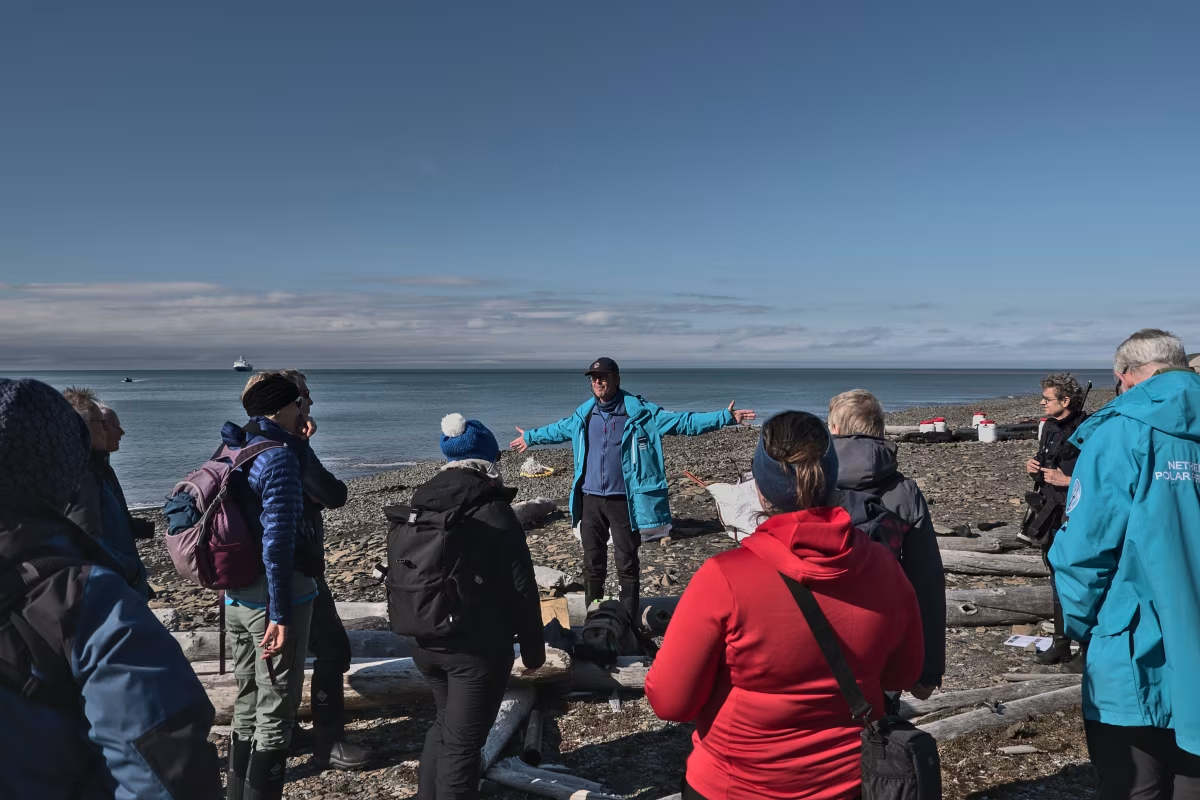
It seems fairly established that commercial fishing is responsible for most of the plastic pollution in the Arctic. Why aren’t regulations preventing this better?
Partly because of disagreement among the main two regulatory bodies about whose responsibility it is. The IMO has what’s called the Marpol Convention, or the International Convention for the Prevention of Pollution from Ships. It’s meant to prevent anything from being thrown over the side of ships, with the exception of biodegradable things like food.
Then there’s the FAO, the Food and Agriculture Organization of the United Nations, and they deal with fisheries. These two groups cannot come to an agreement about what share of the problem they’re supposed to address, so solutions keep coming to a stalemate.
Currently, however, the IMO is working on a marine litter action plan to drastically reduce the amount of plastic coming from ships – much of it from fishing nets, which are a real problem. But the fisheries say these nets are just accidentally lost, not intentionally dumped into the sea.
That can be true for fishing nets, as they can snag on underwater things like rocks or shipwrecks. But the same doesn’t hold true for cut-off pieces of fishing net or packing material like those plastic tubes.
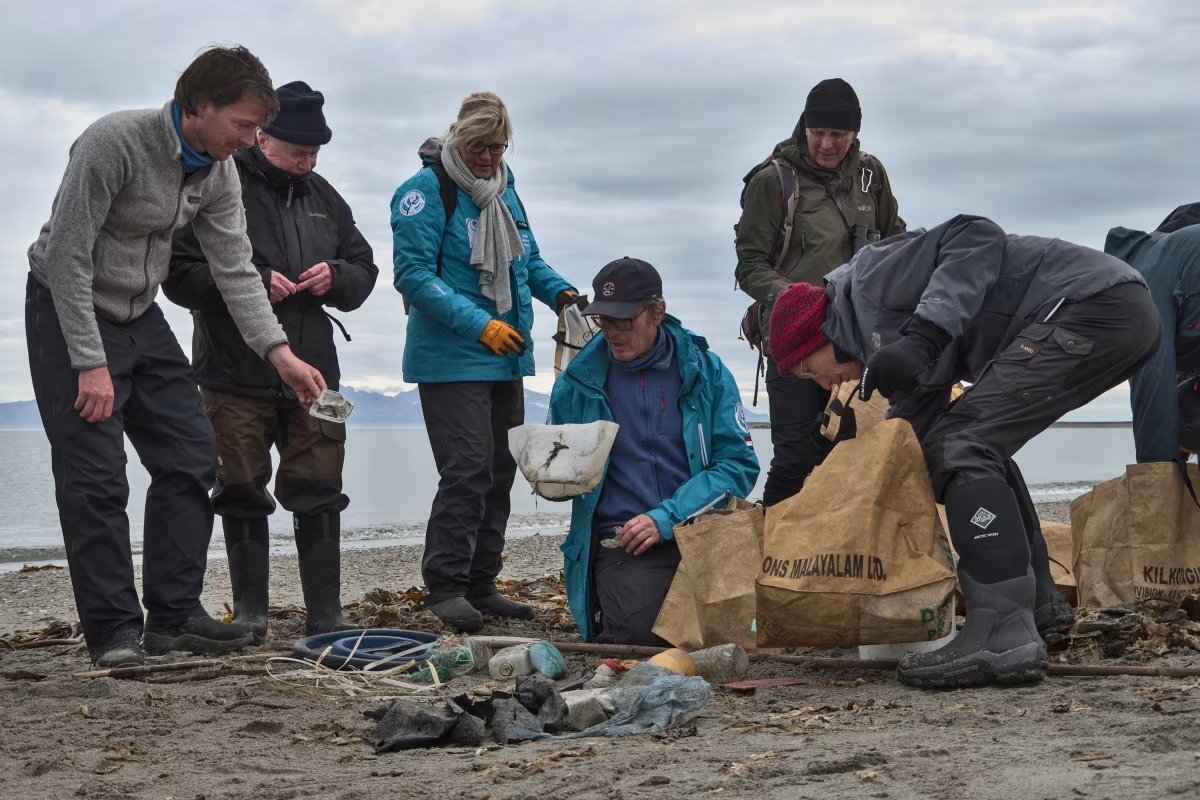
That degree of dodging responsibility must be frustrating for someone who’s as devoted to cleaning up the Arctic as you are.
I think the knowledge about this problem is slowly developing, bit by bit. You can’t really have police at sea to monitor these things, especially at night. But I think there should be an obligation for fishing vessels to have proper waste facilities on board. There should also be an obligation for ports to accept that waste as well as an awareness program for fishermen.
Based on what you’ve seen, is this problem more particular to the Arctic?
No, I think it’s a big problem all over. Some places are just handling it better than others. In the North Sea, there’s a program that allows fishermen to bring back waste they’ve accidentally collected while fishing and have it responsibly processed back at port for free.
Very often, these fishermen collect quite a lot. In the old days, they would just throw it back over the side. Now there’s less incentive to do that. The same is true in Svalbard now that Longyearbyen has a special container for waste collected from the beaches.
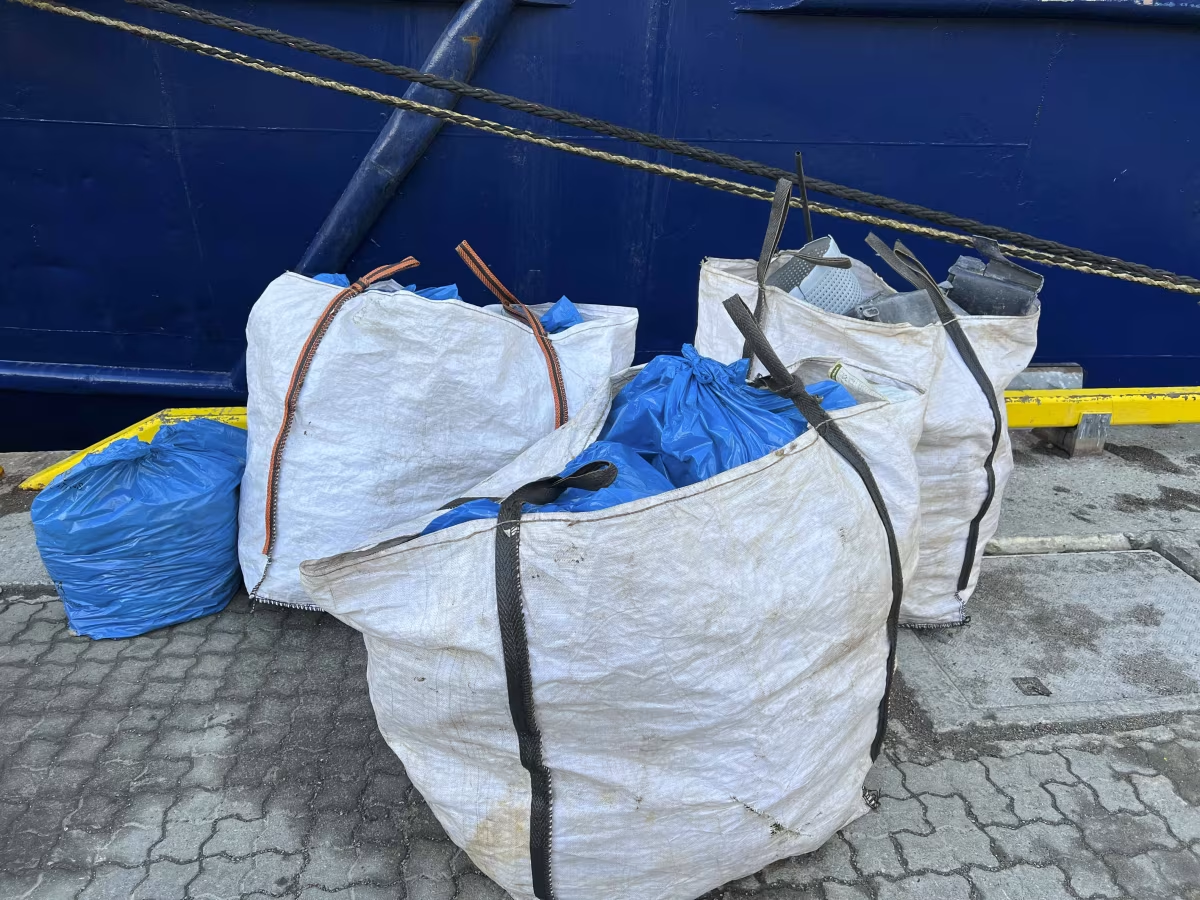
When you do your litter IDs, what happens after you deliver the information? Have your findings led to any concrete policy changes?
Included in our reports are suggestions about how to deal with the problem of marine waste. As for changes in policy, we haven’t seen much yet. But we’ve only just started.
To belabor the obvious, what would be the result (apart from ruining the Arctic scenery) of stopping all waste removal efforts?
The impact on wildlife would be tremendous. One of the main dangers with plastics is entanglement, which happens a lot with birds. You’re probably also familiar with those pictures of seals with strapping bands wrapped around them.
These strong plastic bands are used in fishing, delivery boxes, and other business. A seal swims through it, gets stuck, and is never able to get it off. The seal will continue to grow until it basically cannot move inside the band anymore.
Some animals will also swallow plastics, thinking they’re food. Birds, turtles, and whales all tend to do this, and the undigestible plastic stays in their stomachs forever. This can be both toxic and prevent them from eating. This has been documented in fulmars and whales.
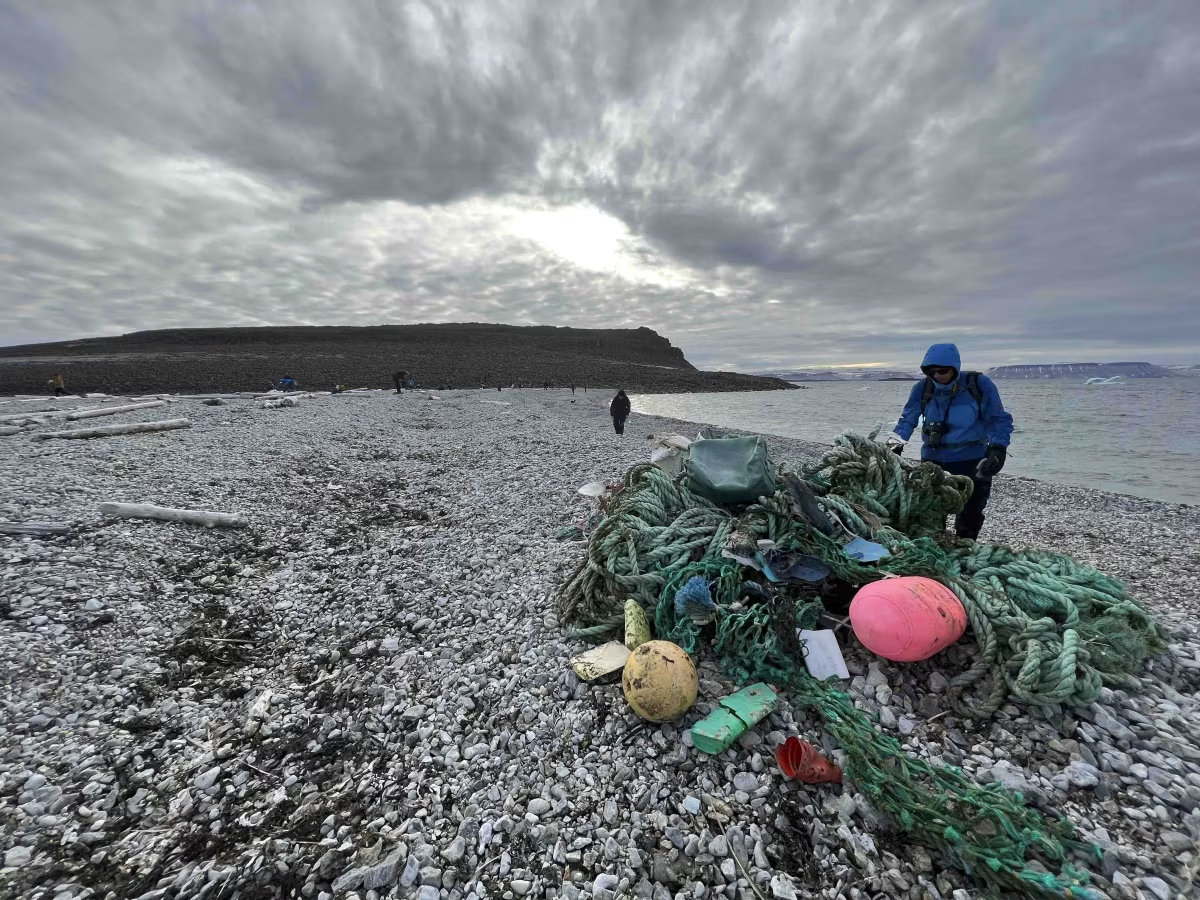
Do you see the problem getting worse or better since you started?
It depends on the area. I think consumer plastic has decreased in the North Sea. But in Svalbard, there wasn’t so much consumer waste to begin with. Most of the progress there has been collecting fishing waste from the beaches and disposing of it in Longyearbyen.
When we were in Greenland, we analyzed about 300 kilos of plastic collected from the beaches. We found that most of it was from local sources – small-scale fishermen, for instance, dumping empty bottles of engine oil overboard. Now Greenland has a refund system for those bottles. This very basic incentive has helped reduce plastic waste there, so that’s good to see.
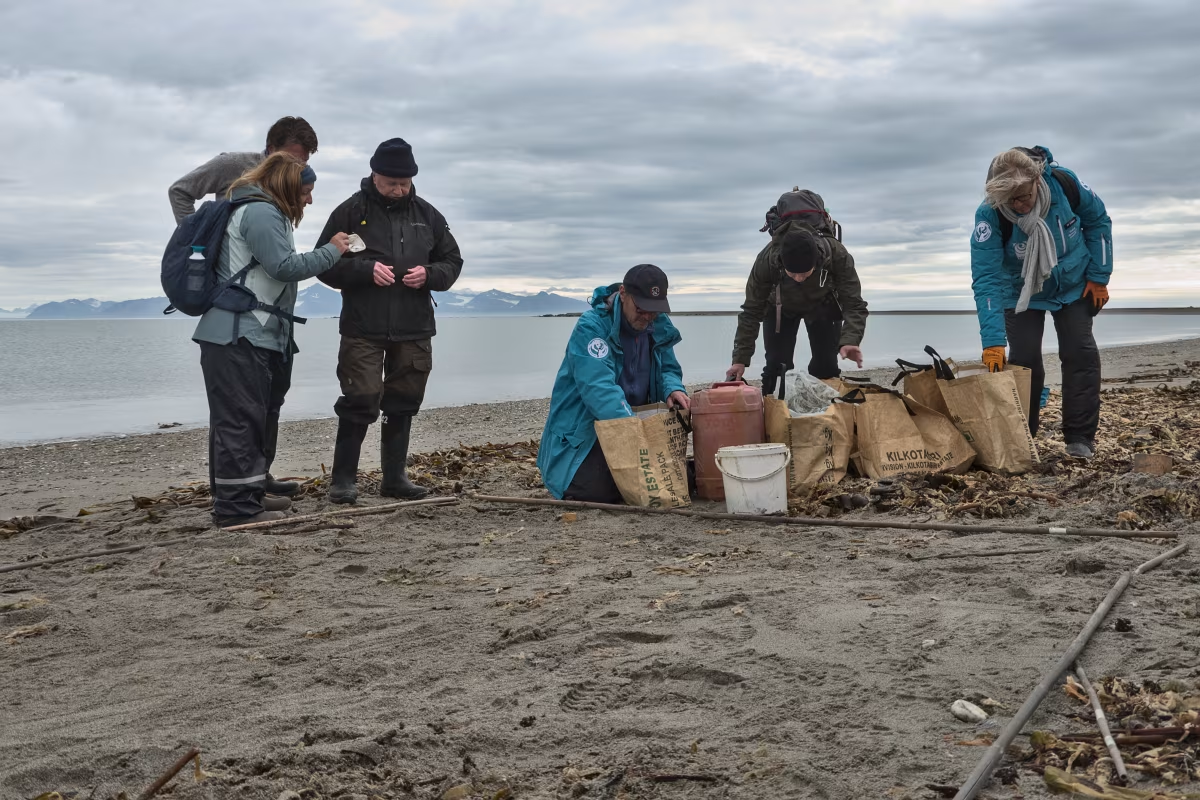
Any hopes for your upcoming Svalbard trip or the beach cleanups?
The cleanups will be pretty standard. We’ll go on shore with around a hundred people. Half will go for a sightseeing walk, while the rest will join us in waste removal efforts. Then we’ll do the same thing later with opposite groups. Everyone who wants to participate will get the chance.
I hope to go places where not many other people have done this work. And obviously, I hope to see a polar bear. I haven’t been to northern Svalbard much, and that is a big part of this particular Svalbard cruise. I’m especially looking forward to Hinlopen Strait, where I’ve never been.
On the SEES expedition, there were 50 passengers alongside 50 scientists. I asked some of the paying guests why they didn’t choose another trip, like one dedicated to polar bears or something more “touristy.” Most of them said they wanted a more active experience that left the environment better than they found it, which is exactly what I aim to provide.
I’m always encouraged by the kind of people who take polar expedition trips, especially those who partake in these cleanups. They’re not your usual kind of traveler. They’re engaged.
When we talk about litter in the polar regions, it’s easy to become sad. But I find that when I work with these people to combat the issue, our enthusiasm is contagious. We feel like we’re doing something good. I enjoy sharing that feeling with the passengers.
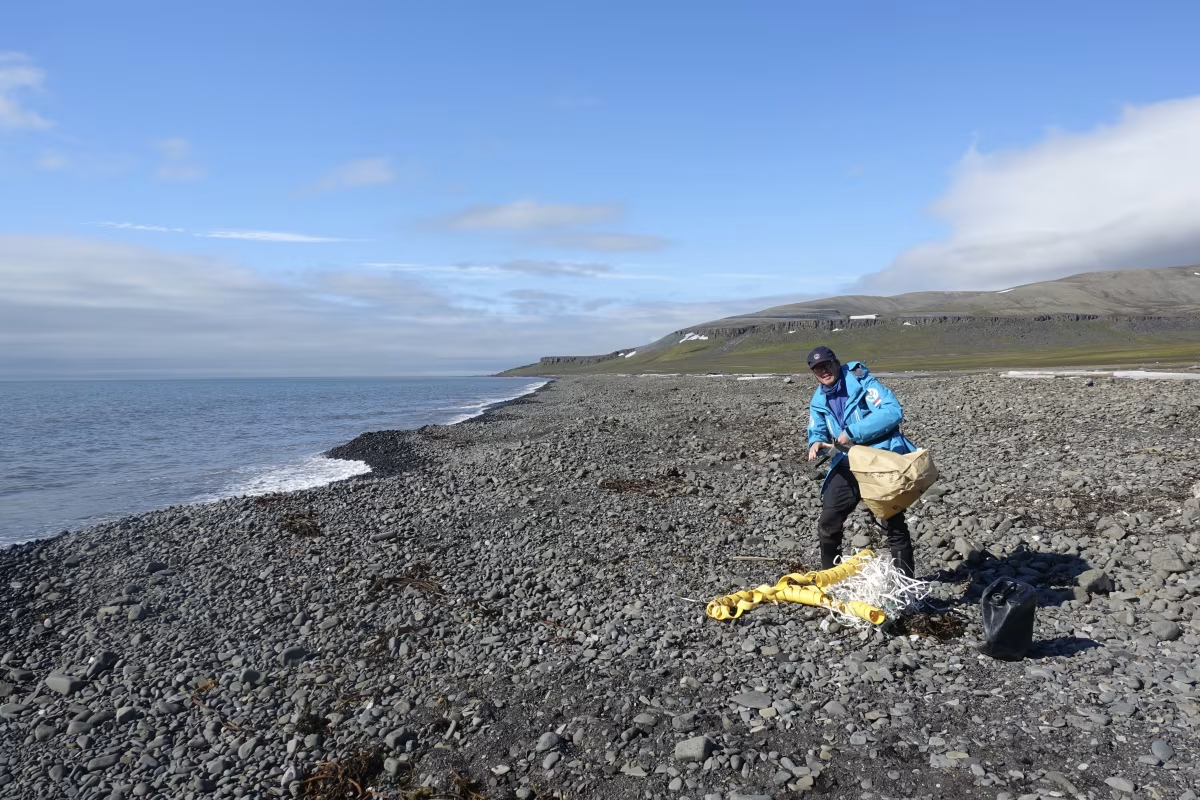
Images by Rob Buiter, Nathalie Steins, and George Kennedy

